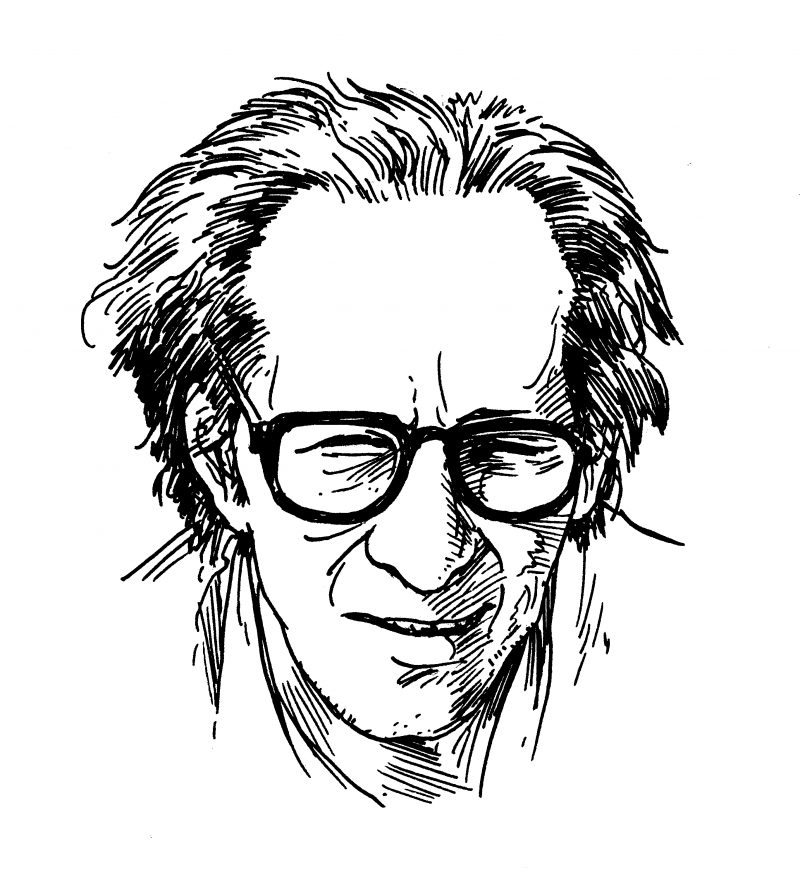Frank Stella had come to Toronto to help promote an exhibition of his prints from the collection of a friend of his who owned the Adelaide Club, where the prints were being shown. The night of the opening my friend and I went and realized that the Adelaide Club was not, as we’d expected, a gentlemen’s club with bookshelves lining the walls, but rather a health club—a fitness center—and so among those who arrived in all their elegance to drink the free wine and eat the canapés and hear Frank Stella say a few words were men and women sweating through their spandex, passing among the hobnobbers with towels thrown over their shoulders, on their way to and from the locker rooms. It was bizarre.
The next day I met Mr. Stella in the Adelaide Club once again. It was eleven in the morning. All signs of the former night’s elegance were gone. The long white drapes that had obscured the squash courts were pulled back to reveal men in shorts and wristbands. On the counter where there had been white wine were now cups of yogurt and granola. We sat at a high table and Mr. Stella wore a fleece vest with TEAM STELLA embroidered in small letters above a pocket.
Frank Stella, born in 1936 in Malden, Massachusetts, has been considered a major American artist for almost fifty years, becoming, in 1970, the youngest artist ever to have a career retrospective at the Museum of Modern Art in New York. He is best known for the monochromatic pinstriped paintings that first brought him to prominence, which when seen in person have a very moving, vulnerable quality, and (a few years later) for his color-field paintings on irregularly shaped canvases. He helped legitimize printmaking as an artform in the late 1960s, and his work in the 1980s included paintings in high relief on objects such as freestanding metal pieces that contrasted with his early, minimalist works. He seems to be all over Toronto—a bright, mural-size work of intertwining half-circles from 1970, Damascus Gate, Stretch Variation, hangs high on a wall in the David Mirvish bookshop, where I first saw his work as a child. In the past twenty years, he has taken on architecturally scaled sculptural commissions, such as the design of the interior of the Princess of Wales Theatre here, as well as an installation in front of the National Gallery of Art, in Washington, D.C.
Frank Stella spoke especially quickly during this interview, with much energy and an air of distraction. After it was done, while waiting for the elevator to go back up to the main floor of the...
You have reached your article limit
Sign up for a digital subscription and continue reading all new issues, plus our entire archives, for just $1.50/month.
Already a subscriber? Sign in





